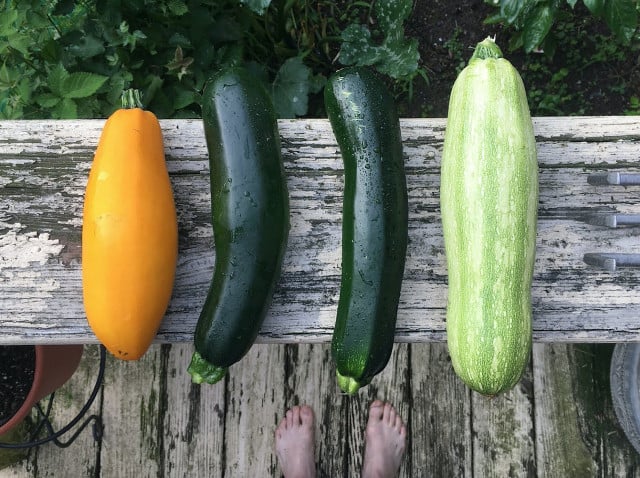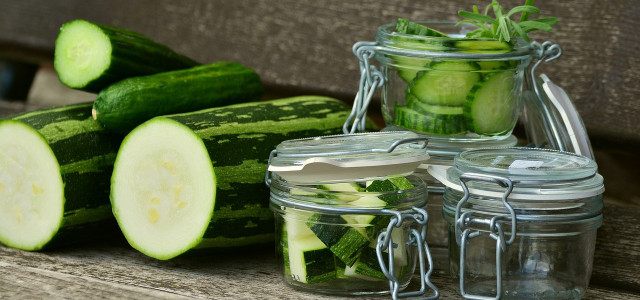Now that fall has officially arrived, it's time to figure out what to do with the last of the summer squash harvest. We'll show you how to freeze squash so you can enjoy the fruits of your labor all year long.
There are so many different varieties of summer squash out there. If you’ve never heard the term “summer squash” before, it refers to any squash that is harvested before it’s fully mature. This means that the skin and seeds are still soft and edible. Whether you’ve grown them yourself or were gifted some by a neighbor, it’s easy to find yourself with more than you can handle. The two most popular things to do with squash are to ferment it, or freeze it. We’re going to take a look at how to freeze squash using two different methods.
How to Freeze Squash: Blanching Method

(Foto: CC0 / Pixabay / bones64)
Can you freeze squash? Despite its high water content, freezing summer squash is easy and can be done in a few simple steps. For best results, always use fresh produce when freezing – you want to lock in that delicious flavor and all the nutrients. If you use bruised and mushy squash, that’s what you’ll end up with when it’s thawed.
Step 1: Cleaning
You’ll want to give your squash a good clean to get rid of any dirt left on them. A simple vegetable brush works, or you can use your hands. Rinse well after scrubbing.
Step 2: Cutting
Next, you’ll want to chop both ends of the squash off. Then cut the squash into pieces – try and cut them into a size that will work for you when you want to thaw and use it.
Step 3: Blanching
Submerge your summer squash into a pot of boiling water and leave it there for about 3 minutes. This process is known as blanching; it helps to retain both color and flavor. If you have a lot of squash, it’s best to blanch it in batches.
Step 4: Ice Bath
To complete the blanching process, remove the squash from the boiling water and place it directly into a large bowl filled with ice water. This will stop the cooking process.
Step 5: Freezing Your Squash
Now that you’ve prepared your summer squash for freezing, it’s time to divvy it up into containers for the freezer. Try to portion it out into the containers evenly, so you’ll know how much to take out and thaw at a later date.
Step 6: Thawing & Using
You can thaw your squash in the fridge overnight before using it, or depending on the recipe, you can add it in frozen. Squash has high water content, so it will become mushy when thawed. Therefore, it’s always recommended to use your frozen squash in a recipe that will hide its consistency.
Read More: Freeze Foods without Plastic: 6 Sustainable Household Hacks
Freezing Grated Zucchini



(Foto: CC0 / Pixabay / jhusemannde)
Due to the number of recipes out there that call for grated zucchini, it’s often easiest to grate it fresh, and then freeze it in recipe-sized portions. You don’t need to blanch it at all using this method! Here’s how to do it:
- Wash any dirt off the zucchini.
- Grate it using a medium grate. If you go too small, it will end up soupy.
- Portion out recipe-sized servings into a clean kitchen towel. Squeeze as much liquid as you can from the zucchini mass.
- Place your zucchini portions in resealable and freezer-safe containers. Be sure to write the date and contents on the container somewhere and place it in your freezer.
- Take it out when you’re ready to use!
Freezing grated zucchini makes it easy when you want to make delicious recipes like zucchini bread or zucchini casserole. The possibilities are endless!
Read more:
- Homemade Vegetable Broth Recipe: Easy, Organic and with Freshest Ingredients
- Can You Eat Pumpkin Skin? Hokkaido, Butternut Squash, and More
- How to Store Apples: Easy Ways to Keep Them Fresh
Do you like this post?






